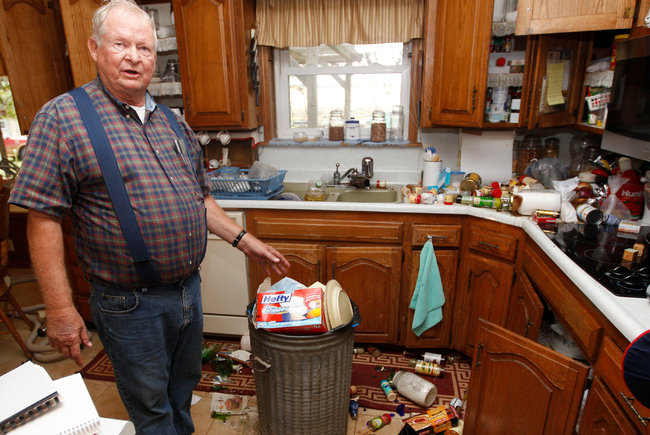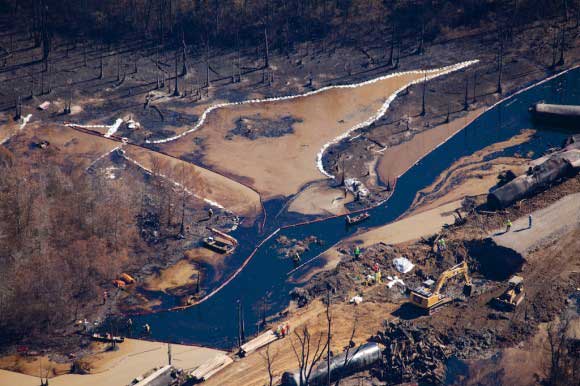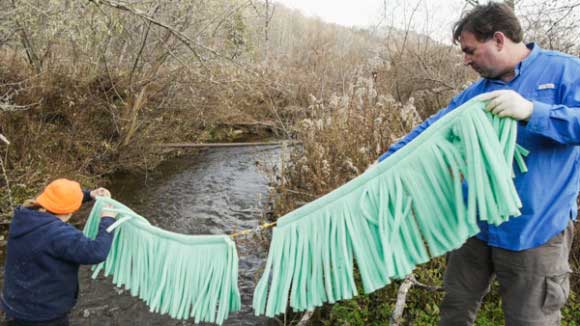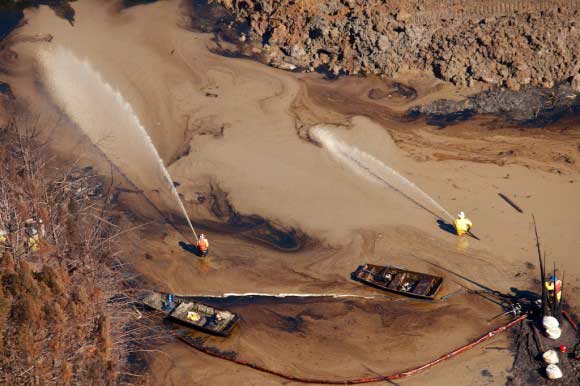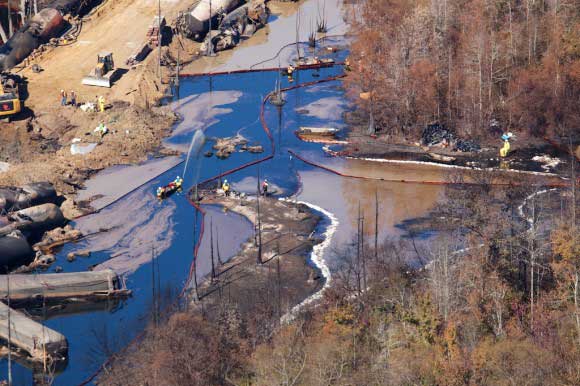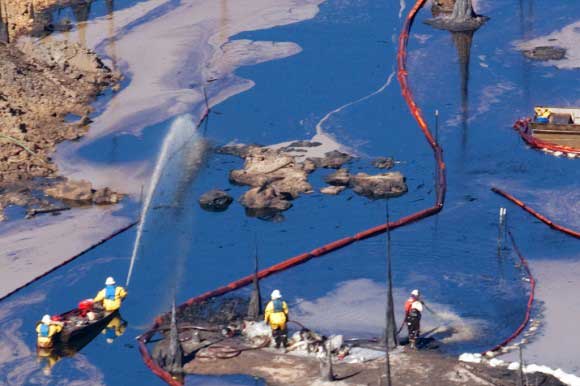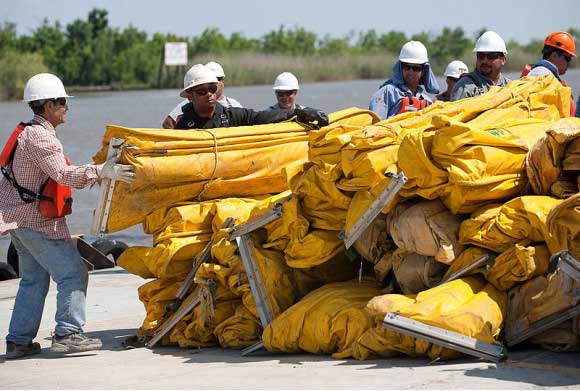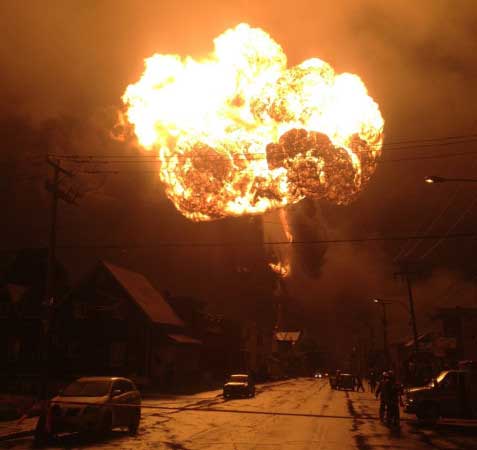http://www.rollingstone.com/politics/news/obama-and-climate-change-the-real-story-20131217
The president has said the right things about climate change – and has taken some positive steps. But we’re drilling for more oil and digging up more carbon than ever

Illustration by Victor Juhasz
By Bill McKibben
December 17, 2013 9:00 AM ET
Two years ago, on a gorgeous November day, 12,000 activists surrounded the White House to protest the proposed Keystone XL pipeline. Signs we carried featured quotes from Barack Obama in 2008: “Time to end the tyranny of oil”; “In my administration, the rise of the oceans will begin to slow.”
Global Warming’s Terrifying New Math
Our hope was that we could inspire him to keep those promises. Even then, there were plenty of cynics who said Obama and his insiders were too closely tied to the fossil-fuel industry to take climate change seriously. But in the two years since, it’s looked more and more like they were right – that in our hope for action we were willing ourselves to overlook the black-and-white proof of how he really feels.
If you want to understand how people will remember the Obama climate legacy, a few facts tell the tale: By the time Obama leaves office, the U.S. will pass Saudi Arabia as the planet’s biggest oil producer and Russia as the world’s biggest producer of oil and gas combined. In the same years, even as we’ve begun to burn less coal at home, our coal exports have climbed to record highs. We are, despite slight declines in our domestic emissions, a global-warming machine: At the moment when physics tell us we should be jamming on the carbon brakes, America is revving the engine.
Greenland Melting: Climate Change’s Disasterous Effects
You could argue that private industry, not the White House, has driven that boom, and in part you’d be right. But that’s not what Obama himself would say. Here’s Obama speaking in Cushing, Oklahoma, last year, in a speech that historians will quote many generations hence. It is to energy what Mitt Romney’s secretly taped talk about the 47 percent was to inequality. Except that Obama was out in public, boasting for all the world to hear:
“Over the last three years, I’ve directed my administration to open up millions of acres for gas and oil exploration across 23 different states. We’re opening up more than 75 percent of our potential oil resources offshore. We’ve quadrupled the number of operating rigs to a record high. We’ve added enough new oil and gas pipeline to encircle the Earth, and then some. . . . In fact, the problem . . . is that we’re actually producing so much oil and gas . . . that we don’t have enough pipeline capacity to transport all of it where it needs to go.”
Actually, of course, “the problem” is that climate change is spiraling out of control. Under Obama we’ve had the warmest year in American history – 2012 – featuring a summer so hot that corn couldn’t grow across much of the richest farmland on the planet. We’ve seen the lowest barometric pressure ever recorded north of Cape Hatteras, North Carolina, and the largest wind field ever measured, both from Hurricane Sandy. We’ve watched the Arctic melt, losing three quarters of its summer sea ice. We’ve seen some of the largest fires ever recorded in the mountains of California, Colorado and New Mexico. And not just here, of course – his term has seen unprecedented drought and flood around the world. The typhoon that just hit the Philippines, according to some meteorologists, had higher wind speeds at landfall than any we’ve ever seen. When the world looks back at the Obama years half a century from now, one doubts they’ll remember the health care website; one imagines they’ll study how the most powerful government on Earth reacted to the sudden, clear onset of climate change.
The Fossil Fuel Resistance
And what they’ll see is a president who got some stuff done, emphasis on “some.” In his first term, Obama used the stimulus money to promote green technology, and he won agreement from Detroit for higher automobile mileage standards; in his second term, he’s fighting for EPA regulations on new coal-fired power plants. These steps are important – and they also illustrate the kind of fights the Obama administration has been willing to take on: ones where the other side is weak. The increased mileage standards came at a moment when D.C. owned Detroit – they were essentially a condition of the auto bailouts. And the battle against new coal-fired power plants was really fought and won by environmentalists. Over the past few years, the Sierra Club and a passel of local groups managed to beat back plans for more than 100 new power plants. The new EPA rules – an architecture designed in part by the Natural Resources Defense Council – will ratify the rout and drive a stake through the heart of new coal. But it’s also a mopping-up action.
Obama loyalists argue that these are as much as you could expect from a president saddled with the worst Congress in living memory. But that didn’t mean that the president had to make the problem worse, which he’s done with stunning regularity. Consider:
• Just days before the BP explosion, the White House opened much of the offshore U.S. to new oil drilling. (“Oil rigs today generally don’t cause spills,” he said by way of explanation. “They are technologically very advanced.”)
• In 2012, with the greatest Arctic melt on record under way, his administration gave Shell Oil the green light to drill in Alaska’s Beaufort Sea. (“Our pioneering spirit is naturally drawn to this region, for the economic opportunities it presents,” the president said.)
• This past August, as the largest forest fire in the history of the Sierra Nevadas was burning in Yosemite National Park, where John Muir invented modern environmentalism, the Bureau of Land Management decided to auction 316 million tons of taxpayer-owned coal in Wyoming’s Powder River basin. According to the Center for American Progress, the emissions from that sale will equal the carbon produced from 109 million cars.
Read more: http://www.rollingstone.com/politics/news/obama-and-climate-change-the-real-story-20131217#ixzz2nlP850BP
Follow us: @rollingstone on Twitter | RollingStone on Facebook
Even on questions you’d think would be open-and-shut, the administration has waffled. In November, for instance, the EPA allowed Kentucky to weaken a crucial regulation, making it easier for mountaintop-removal coal mining to continue. As the Sierra Club’s Bruce Nilles said, “It’s dismaying that the Obama administration approved something even worse than what the Bush administration proposed.”
All these steps are particularly toxic because we’ve learned something else about global warming during the Obama years: Most of the coal and gas and oil that’s underground has to stay there if we’re going to slow climate change.
Though the Copenhagen climate conference in 2009 was unquestionably the great foreign-policy failure of Obama’s first term, producing no targets or timetables or deals, the world’s leaders all signed a letter pledging that they would keep the earth’s temperature from rising more than two degrees Celsius. This is not an ambitious goal (the one degree we’ve raised the temperature already has melted the Arctic, so we’re fools to find out what two will do), but at least it is something solid to which Obama and others are committed. To reach that two-degree goal, say organizations such as the Carbon Tracker Initiative, the World Bank, the International Energy Agency, the Intergovernmental Panel on Climate Change, HSBC and just about everyone else who’s looked at the question, we’d need to leave undisturbed between two-thirds and four-fifths of the planet’s reserves of coal, gas and oil.
The Powder River Basin would have been a great place to start, especially since activists, long before the administration did anything, have driven down domestic demand for coal by preventing new power plants. But as the “Truth Team” on barack obama.com puts it, “building a clean future for coal is an integral part of President Obama’s plan to develop every available source of American energy.”
And where will the coal we don’t need ourselves end up? Overseas, at record levels: the Netherlands, the U.K., China, South Korea. And when it gets there, it slows the move to cleaner forms of energy. All told, in 2012, U.S. coal exports were the equivalent of putting 55 million new cars on the road. If we don’t burn our coal and instead sell it to someone else, the planet doesn’t care; the atmosphere has no borders.
As the administration’s backers consistently point out, America has cut its own carbon emissions by 12 percent in the past five years, and we may meet our announced national goal of a 17 percent reduction by decade’s end. We’ve built lots of new solar panels and wind towers in the past five years (though way below the pace set by nations like Germany). In any event, building more renewable energy is not a useful task if you’re also digging more carbon energy – it’s like eating a pan of Weight Watchers brownies after you’ve already gobbled a quart of Ben and Jerry’s.
Let’s lay aside the fact that climate scientists have long since decided these targets are too timid and that we’d have to cut much more deeply to get ahead of global warming. All this new carbon drilling, digging and burning the White House has approved will add up to enough to negate the administration’s actual achievements: The coal from the Powder River Basin alone, as the commentator Dave Roberts pointed out in Grist, would “undo all of Obama’s other climate work.”
The perfect example of this folly is the Keystone XL pipeline stretching south from the tar sands of Canada – the one we were protesting that November day. The tar sands are absurdly dirty: To even get oil to flow out of the muck you need to heat it up with huge quantities of natural gas, making it a double-dip climate disaster. More important, these millions of untouched acres just beneath the Arctic Circle make up one of the biggest pools of carbon on Earth. If those fields get fully developed, as NASA’s recently retired senior climate scientist James Hansen pointed out, it will be “game over” for the climate.
Obama has all the authority he needs to block any pipelines that cross the border to the U.S. And were he to shut down Keystone XL, say analysts, it would dramatically slow tar-sands expansion plans in the region. But soon after taking office, he approved the first, small Keystone pipeline, apparently without any qualms. And no one doubts that if a major campaign hadn’t appeared, he would have approved the much larger Keystone XL without a peep – even though the oil that will flow through that one pipe will produce almost as much carbon as he was theoretically saving with his new auto-mileage law.
But the fight to shut down the pipeline sparked a grassroots movement that has changed the culture of environmentalism – but not, so far, the culture of the White House. For me, the most telling moment came a month or two ago when it emerged that the president’s former communications director, Anita Dunn, had taken a contract to flack for the pipeline.
The reason for fighting Keystone all along was not just to block further expansion of the tar sands – though that’s required, given the amount of carbon contained in that expanse of Alberta. We also hoped that doing the right thing would jump-start Washington in the direction of real climate action. Instead, the effort necessary to hold off this one pipeline has kept environmentalists distracted as Obama has opened the Arctic and sold off the Powder River Basin, as he’s fracked and drilled. It kept us quiet as both he and Mitt Romney spent the whole 2012 campaign studiously ignoring climate change.
Read more: http://www.rollingstone.com/politics/news/obama-and-climate-change-the-real-story-20131217page=2#ixzz2nlOvdPw1
Follow us: @rollingstone on Twitter | RollingStone on Facebook
We’re supposed to be thrilled when Obama says something, anything, about global warming – he gave a fine speech this past June. “The question,” he told a Georgetown University audience, is “whether we will have the courage to act before it’s too late. And how we answer will have a profound impact on the world that we leave behind not just to you, but to your children and to your grandchildren. As a president, as a father and as an American, I’m here to say we need to act.” Inspiring stuff, but then in October, when activists pressed him about Keystone at a Boston gathering, he said, “We had the climate-change rally back in the summer.” Oh.
In fact, that unwillingness to talk regularly about climate change may be the greatest mistake the president has made. An account in Politico last month described his chief of staff dressing down Nobel laureate and then-Energy Secretary Steven Chu in 2009 for daring to tell an audience in Trinidad that island nations were in severe danger from rising seas. Rahm Emanuel called his deputy Jim Messina to say, “If you don’t kill Chu, I’m going to.” On the plane home, Messina told Chu, “How, exactly, was this fucking on message?” It’s rarely been on message for Obama, despite the rising damage. His government spent about as much last year responding to Sandy and to the Midwest drought as it did on education, but you wouldn’t know it from his actions.
Which doesn’t mean anyone’s given up – the president’s inaction has actually helped to spur a real movement. Some of it is aimed at Washington, and involves backing the few good things the administration has done. At the moment, for instance, most green groups are rallying support for the new EPA coal regulations.
Mostly, though, people are working around the administration, and with increasing success. Obama’s plan to auction Powder River Basin coal has so far failed – there aren’t any bidders, in large part because citizens in Washington state and Oregon have fought the proposed ports that would make it cheap to ship all that coal to Asia. Obama has backed fracking to the hilt – but in state after state, voters have begun to limit and restrict the technology. Environmentalists are also taking the fight directly to Big Oil: In October, an Oxford University study said that the year-old fight for divestment from stock in fossil-fuel companies is the fastest-growing corporate campaign in history.
None of that cures the sting of Obama’s policies nor takes away the need to push him hard. Should he do the right thing on Keystone XL, a decision expected sometime in the next six months, he’ll at least be able to tell other world leaders, “See, I’ve stopped a big project on climate grounds.” That could, if he used real diplomatic pressure, help restart the international talks he has let lapse. He’s got a few chances left to show some leadership.
But even on this one highly contested pipeline, he’s already given the oil industry half of what it wanted. That day in Oklahoma when he boasted about encircling the Earth with pipelines, he also announced his support for the southern leg of Keystone, from Oklahoma to the Gulf. Not just his support: He was directing his administration to “cut through the red tape, break through the bureaucratic hurdles and make this project a priority, to go ahead and get it done.”
It has: Despite brave opposition from groups like Tar Sands Blockade, Keystone South is now 95 percent complete, and the administration is in court seeking to beat back the last challenges from landowners along the way. The president went ahead and got it done. If only he’d apply that kind of muscle to stopping climate change.
This story is from the December 19th, 2013 – January 2nd, 2014 issue of Rolling Stone.
Related
Read more: http://www.rollingstone.com/politics/news/obama-and-climate-change-the-real-story-20131217page=3#ixzz2nlOTj6iq
Follow us: @rollingstone on Twitter | RollingStone on Facebook

